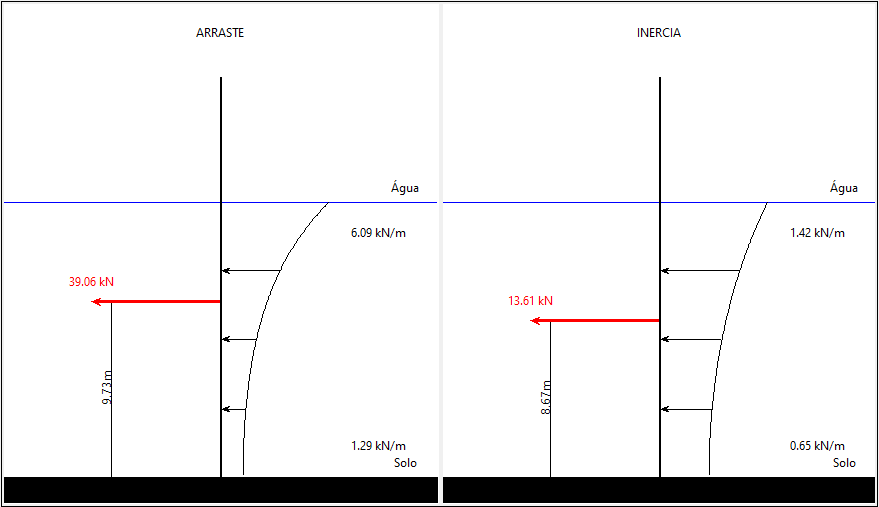A Computational Tool to Determine the Forces Generated by Waves on Piles
DOI:
https://doi.org/10.14295/vetor.v33i1.15164Keywords:
Waves on piles, Morison equation, Free Software, PythonAbstract
This paper presents the development of a computational software tool for the determination of the forces generated by the passage of waves on piles, with the objective of disseminating instructive knowledge, or assisting in the design process of such structure, commonly found in port regions. This tool is built through the use of a free, open-source and easy-to-assimilate computational language. To make this software more intuitive, a graphical interface is designed to illustrate the results obtained. To obtain these results, the present work is based on the methodology adopted by Mason [1], which makes use of Morison’s formula that is commonly present in the literature, and also adopted by the Spanish standard (ROM2.0-11). This work differs from the methodology adopted by Mason in what concerns the determination of the incident wave length on the pile. Here, a numerical solver is used for the solution of the dispersion relation, avoiding the need to verify the wave propagation regime. The results found reinforce the importance of using computational tools in the study or practice of engineering, providing greater precision and agility in performing complex calculations.
Downloads
References
J. Mason, Obras Portuárias, 1st ed. Rio de Janeiro, Brasil: Editora Campus, 1982, in Portuguese.
S. A. dos Santos, M. N. Carvalho, D. Barbosa, R. J. P. de Araújo, and K. F. da Silva, “Desenvolvimento de uma ferramenta computacional para aplicação num estudo de qualidade da energia elétrica associada a geração solar fotovoltaica,” Anais do Simpósio Brasileiro de Sistema Elétricos, 2021, in Portuguese. Available at: https://www.sba.org.br/open_journal_systems/index.php/sbse/article/view/2343/1996
A. Azevedo, L. M. Michelini, D. N. Pinto, J. R. G. Lima, and G. A. V. D. Menezes, “Softwares livres no ensino de engenharia,” Anais do Congresso Nacional Universidade, EAD e Software Livre, 2011, in Portuguese. Available at: http://www.periodicos.letras.ufmg.br/index.php/ueadsl/article/download/2713/2666
G. V. Rossum and F. L. Drake, Python 3 Reference Manual. Scotts Valley, CA: CreateSpace, 2009.
ANACONDA, Anaconda Software Distribution, 2020. Available at: https://docs.anaconda.com/
A. Meurer and C. P. Smith, “SymPy: symbolic computing in Python,” PeerJ Computer Science, vol. 3, p. e103, 2017. Available at: https://doi.org/10.7717/peerj-cs.103
R. G. Dean and R. A. Dalrymple, Water Wave Mechanics for Engineers and Scientists, 2nd ed. Singapore: World Scientific Publishing Company, 1991.
J. R. Morison, J. W. Johnson, and S. A. Schaaf, “The Force Exerted by Surface Waves on Piles,” Journal of Petroleum Technology, vol. 2, no. 05, pp. 149–154, 1950. Available at: https://doi.org/10.2118/950149-G
ROM 2.0-11, Recomendaciones para el proyecto y ejecución en Obras de Atraque y Amarre, ser. Recomendaciones para Obras Marítimas. Serie 2, Obras portuárias interiores. Puertos del Estado, 2012, in Spanish.

















